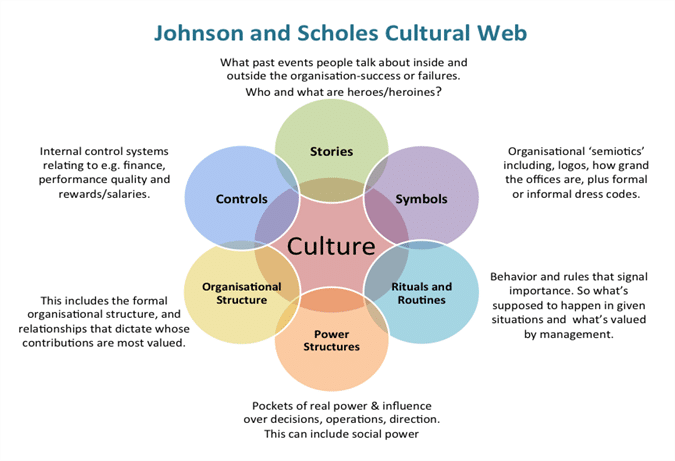
Hey CMOs, Culture Still Eats Marketing Strategy for Breakfast!
The phrase “culture eats marketing strategy for breakfast” was coined by management consultant Peter Drucker 20 years ago and remains as true today as it ever was.
If anything, culture has become even more important in recent years. The millennial workforce of today value company culture more than any other generation, and are more likely to put work-life balance, corporate values, and engagement and purpose over salary.
No matter what marketing strategy you put in place, if your team aren’t engaged and don’t believe their work has real value, it’s unlikely to succeed.
So before you invest your attention and resources into developing your marketing strategy, it makes sense to evaluate your corporate culture. Is it positive and thriving? Or is there room for improvement?
Quick Takeaways:
- No matter how good your marketing strategy is, it can’t succeed without a strong and positive culture behind it.
- Corporate culture is organic and made up from several different elements, but it can be cultivated.
- It’s never too late to take steps to improve the culture of your organization.
What Is Corporate Culture?
There’s no easy way to describe culture. The culture of an organization is a result of several elements that all add up to an overall feeling, atmosphere, and attitude for people working there. You can think of culture as being akin to the personality of your business.
In their book, Fundamentals of Strategy, authors Gerry Johnson and Kevan Scholes break corporate culture down into six different elements:

- Stories about events and people within the organization
- Rituals and routines that are considered normal in the organization
- Symbols that represent the organization both internally and externally
- Organizational structure
- Controls for setting quality standards
- Power structures
These elements overlap and affect each other, and collectively make up the culture of an organization. If any element is out of balance or negative, it can bring down the culture of the entire organization.
Creating a Positive Corporate Culture
When Tamara Mendelsohn joined Eventbrite in its startup phase as VP of marketing, she knew she had a lot of work to do. She understood the responsibility of being in charge of marketing could either make or break the new organization.
Mendelsohn’s first year at Eventbrite involved strategic planning, of course. During these first months, she focused on understanding the brand’s customers and crystallizing the company’s value proposition.
But Mendelsohn also understood the importance of brand and culture as a foundation for future marketing activities. She took inspiration from a TED talk by Simon Sinek, author of the book Start with Why to sit down with her team to answer their “Why?” question: Just why did Eventbrite exist? What problems did they want to solve for their customers?
This discussion led to further questions, including “What kind of company are we?” and “What do we want to stand for?”
Eventbrite settled on their company mission: bringing the world together through live experiences.
This mission answered their “why?” and formed the basis of all their marketing activities from the first years of operation to the present day.
Eventbrite’s culture is evident in its marketing materials, brand tone, and voice, but also in every other aspect of how the business is run.
Bill Aulet, senior lecturer at the MIT Sloan School of Management, talks about how he visited Eventbrite with a group of students and was impressed with the “energy and excitement in the air,” the enthusiastic employees, and commitment to providing excellent customer service.
This is an example of a company that purposefully engineered their culture by focusing on hiring the right people and championing a positive attitude with a focus on fixing problems rather than complaining about them.
How to Initiate Culture Change in Your Organization
Startups have the advantage that they can start from scratch with building their company culture, which can change and evolve as the business grows along with it.
But what about larger, more established businesses that have identified issues with their current corporate culture?
All hope is not lost. There is always time to turn a negative culture into a positive one, but it will take time and consistent effort to do so.
Start by assessing your current culture. Ask people both inside and outside the organization how they would describe it. Ask questions like:
- What stories do people tell about the organization?
- What do new employees expect when they start?
- What words describe the business?
- Who is in charge of making the decisions?
The next step is to define your ideal culture – as if you were starting from scratch – in much the same way that Eventbrite did during their startup phase.
Review your current mission statement, or scrap it and come up with a new one that really gets to the heart of your organization’s values. In an ideal world, who do you want to be? What’s your “why?”
Think about how your culture would look in your ideal reality. What sort of people would work for you? Who would your customers be? What would an average working day look like?
Finally, you need to figure out how to get from where you are to where you want to be. This is the hard bit and may take some time, but with the help of an action plan identifying key issues, you can achieve it step by step.
Identify your current strengths and weaknesses and how you can build on or improve them to become closer to the culture you’re trying to achieve. This may involve small things such as offering your employees free snacks at work, or it may mean completely overhauling the entire structure of your organization.
Either way, make sure everyone is aware of and committed to the change, from C-suite right down to entry-level employees. Pulling off a culture change is a group effort, and everyone needs to pull their weight.
Does Your Content Represent Your Culture?
If you are ready to get more traffic to your site with quality content that’s published consistently, check out our Content Builder Service. Set up a quick consultation, and I’ll send you a free PDF version of my books. Get started today–and generate more traffic and leads for your business.







